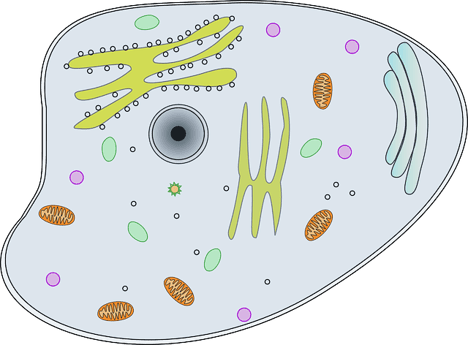
All living things are made of cells and all cells have different parts that perform specific functions. One of the parts present in every cell is called the cell membrane.
In this article, we’ll discuss the cell membrane structure and function, answering the questions “what does the cell membrane do?” and “why is the cell membrane important?”
What Does the Cell Membrane Do?
The main cell membrane function is to protect the inside of a cell. The cell membrane surrounds the cytoplasm of a cell (both plant and animal cells). As a thin, semi-permeable substance, the cell membrane lets some things pass through into the cell while keeping others out. The cell membrane is extremely important for keeping the cell safe.
Because the cell membrane has a semi-permeable structure, it also gives a bit of shape to the cell. While not as thick or sturdy as the cell wall found in plant cells, the cell membrane does help support and give structure to the cell.
The cell membrane is also responsible for helping cells grow through two processes known as endocytosis and exocytosis.
What Is Endocytosis?
During endocytosis, materials from outside of a cell are brought into the cell and then absorbed. Endocytosis helps cells get materials they need.
There are three types of endocytosis. In pinocytosis, cells take in small amounts of extracellular fluids to help them hydrate. In receptor-mediated endocytosis, a large extracellular molecule, like a protein, is bound to a receptor on the cell membrane. In phagocytosis, cells ingest large objects, like chunks of dead organic matter, and seal them off into large vacuoles and digest the material.
What Is Exocytosis?
In exocytosis, a cell releases substances into its environment. During exocytosis, vesicles that contain substances are moved to the cell membrane and fuse with it.
This cell membrane function has three results: the total surface of the membrane increases, toxins or waste products are eliminated, and proteins become part of the plasma membrane.
Cell Membrane Structure
Cell membranes are made up of mainly lipids and proteins.
A lipid is a type of organic molecule found in living things. Lipids are oily or waxy. Fats are made from lipid molecules.
Proteins are large, complex molecules found in living things. They are made up of amino acids and do work related to the structure, function, and regulation of the body’s tissues and organs.
There are three types of lipids and two types of proteins found in cell membranes.

Cell Membrane Lipids
There are three types of lipids found in cell membranes:
Phospholipids are the main component of cell membranes. They line up and form a double layer that all cell membranes have. The double layer phospholipids form helps to protect the cell by only allowing certain materials to pass through.
Cholesterol is a lipid that helps cell membranes from becoming too stiff. Cholesterol acts a bit like a sheepdog - it herds the phospholipids and prevents them from crowding together.
Glycolipids are found on the surface of the cell membrane and help the cell recognize other cells in the body.
Cell Membrane Proteins
Cell membranes have two main types of proteins that then have specific functions within the categories.
Peripheral proteins are proteins that are attached to the outside of the cell membrane. They are involved with the cell membrane because of interactions with other types of proteins.
Integral membrane proteins pass through the membrane itself.
Classes of Peripheral and Integral Membrane Proteins
There are four different classes of peripheral and integral membrane proteins. Both peripheral and integral membrane proteins have structural, receptor, transport molecule, and glycoproteins.
First, there are structural proteins, which, as their name suggests, help give the cell its structure.
Next, there are receptor proteins. These proteins help the cell communicate to other cells (think cell phone reception). They use hormones, neurotransmitters and other things to talk to other cells.
Transport molecules are like ferryboats. They help carry material through the cell membrane.
Finally, glycoproteins also help in communication and transportation.

Cell Membrane Function: Key Takeaways
There are many parts of the cell, like the chromosomes, nucleus, Golgi apparatus, and cell membrane.
The cell membrane structure and function is to act as the gatekeeper to the cell. The cell membrane gives the cell its shape and helps keep bad material out while also ferrying good material in.
All cells have cell membranes, which are composed mainly of lipids and proteins.
What's Next?
Are you studying clouds in your science class? Get help identifying the different types of cloudswith our expert guide.
Working on a research paper but aren't sure where to start? Then check out our guide, where we've collected tons of high-quality research topics you can use for free.
Need help with English class—specifically with identifying literary devices in texts you read? Then you'll definitely want to take a look at our comprehensive explanation of the most important literary devices and how they're used.











